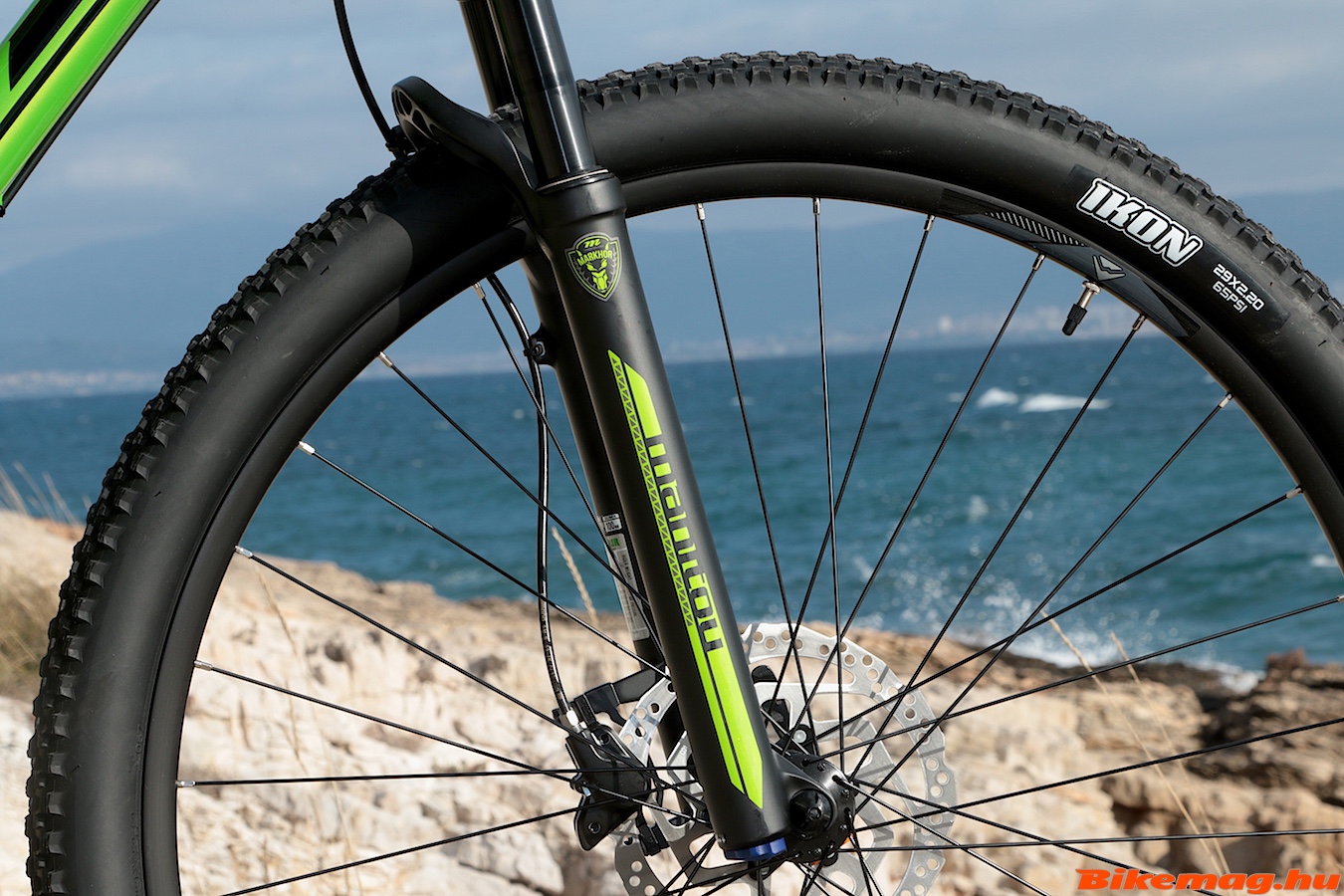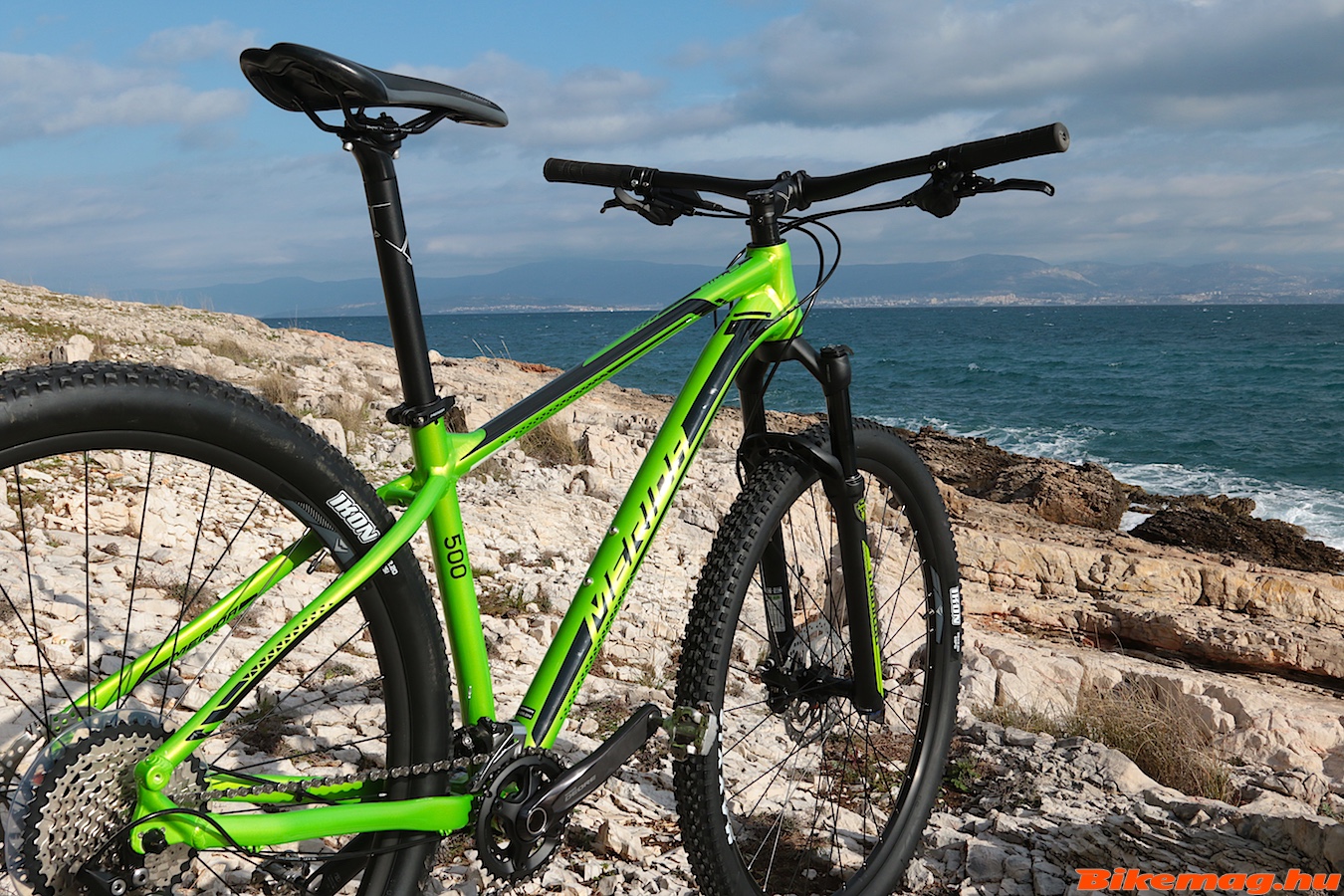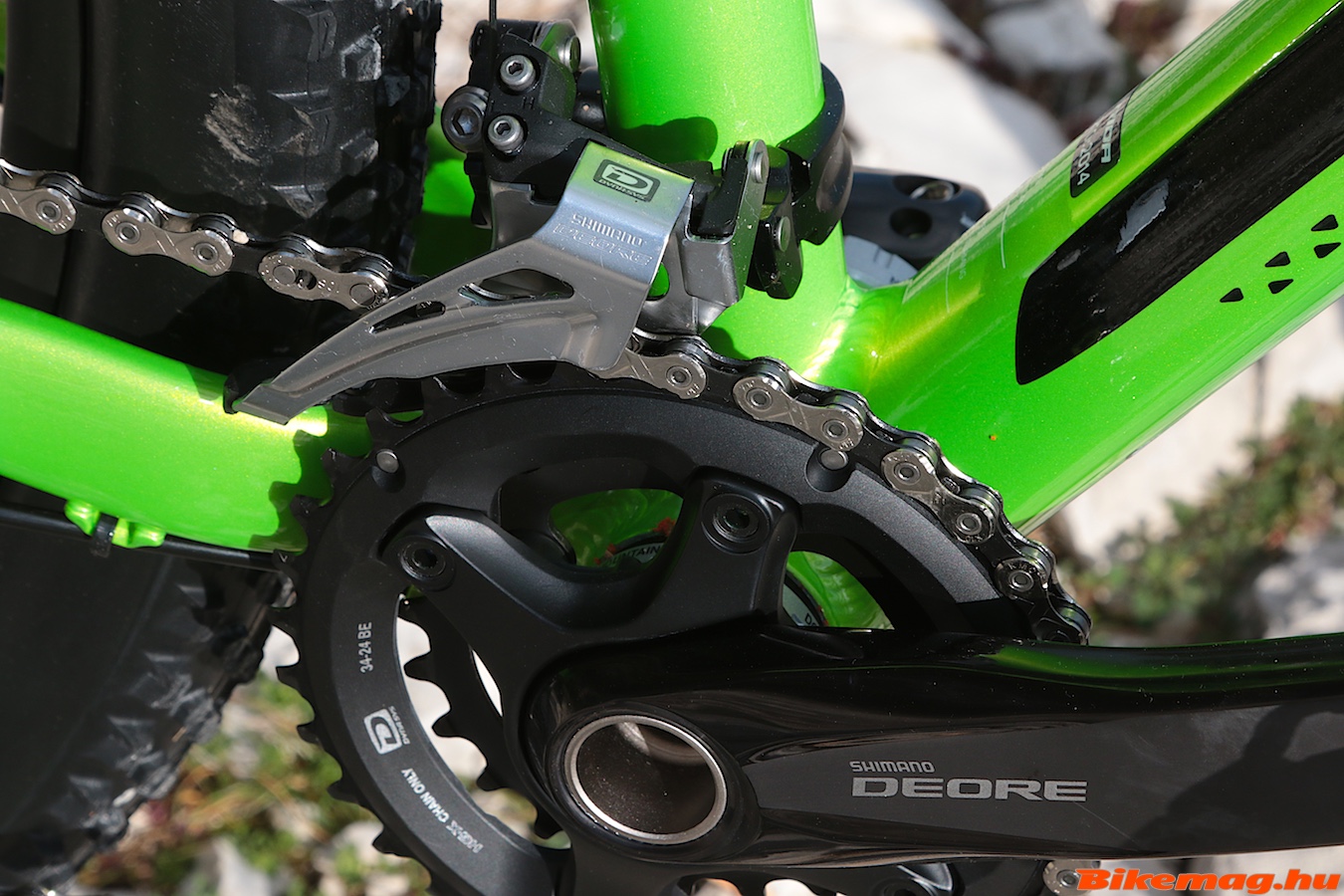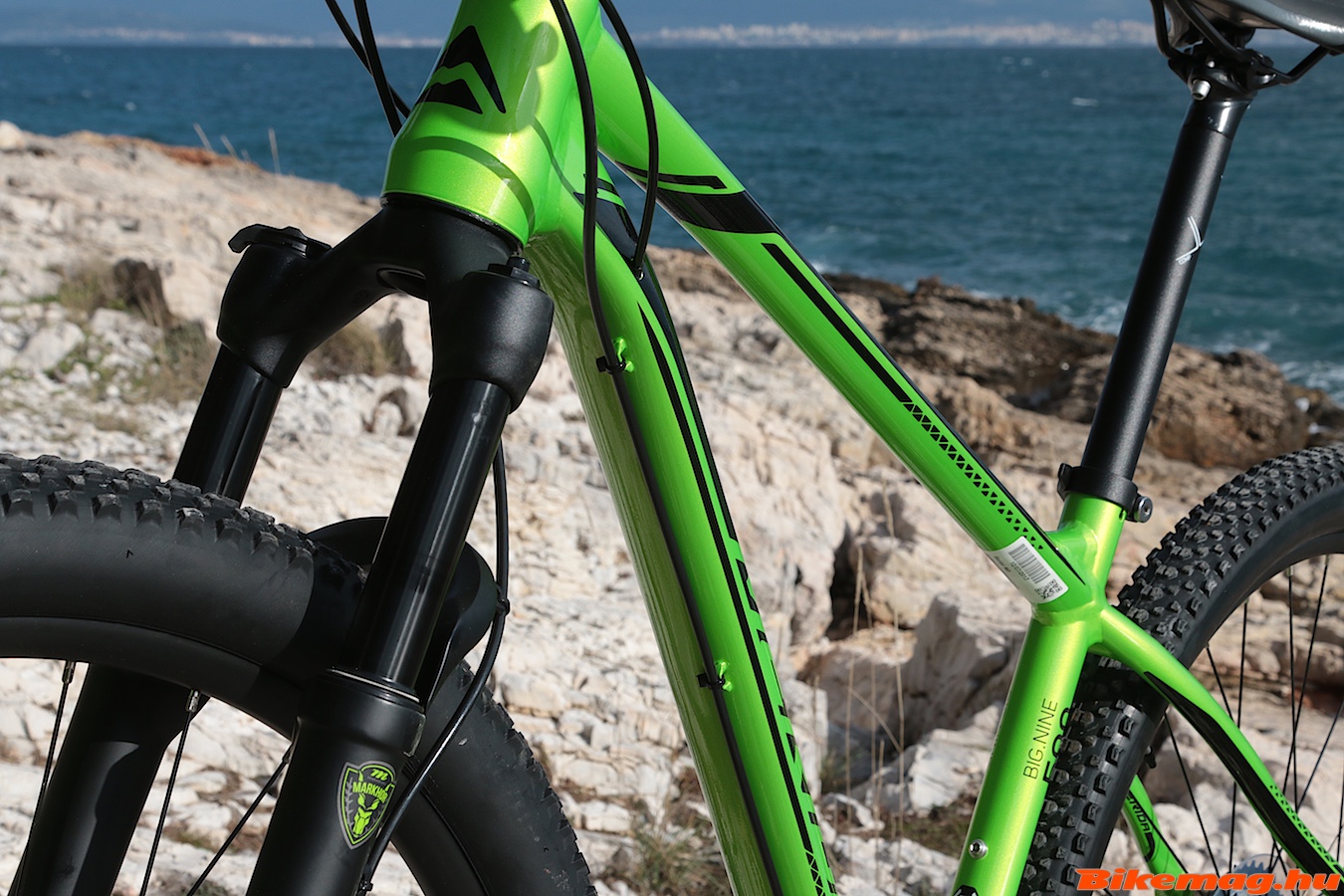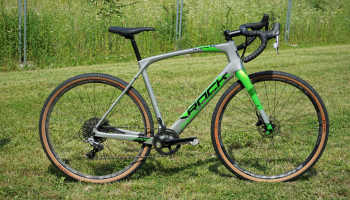We’ve already tested the Merida Big.Nine series on these pages. In the case of this “500”, only the name matches, the target audience, the geometry, the price and the equipment are markedly different. Nevertheless, they have one thing in common: both Big.Nine MTBs from the renowned Taiwanese brand have a striking appearance!
It’s simply a fluke that I was the one present at the press introduction of the Big.Nine Team two years ago, and had the chance to ride the complete Albstadt Marathon marathon “long” distance event on the previous iteration of the model in this review. So I got to know the company’s one-time XCO top model quite well – this “classic” ride had its ups and downs, and it was a tough journey to the finish line! The aluminum frame Merida Big.Nine 500 hardtail is a far-off descendant of the “Team” model, there are about as many similarities – sorry for a car analogy — as with the Mercedes E200D and the AMG E-63!
Big.Nine 500 is not made from carbon composite, it’s based on the proven 6061 RaceLite TFS aluminum frame Merida is renowned for, which helps it to neatly come is just below the HUF 300,000 psychological threshold price. So who really is this bicycle for? For those who are about to purchase their first quality MTB bike, or alternatively for those who do not want to spend a fortune, but still need a reliable bike for the trails. In addition to this, the Big.Nine 500 does not press a racing frame geometry or body position on the rider, as most potential users would not ride anything more serious on it than a few MTB marathons. This could also a bike for complete beginners, since it is easy to handle, inheriting the predecessor’s 70 degree head angle. It also offers a 1,5 cm longer head tube to achieve a more comfortable body position. And to continue the theme, the top tube and the wheelbase is also somewhat shorter. Unfortunately the latter two modifications might have the side effect of a more aggressive behavior, giving it an almost dirt-bike experience that I truly loved, but for the beginner or not-experienced riders it could be too much of the good thing. The model options are vast: it can be purchased with 29″ wheel or the smaller 27.5 size (since the Big.Seven 500 model is the same bike), and the frame size ranges from the very tiny XS (13.5″) to the L (19″) wide for both wheel sizes.
The 29″ wheels roll effortlessly over rocks, of which there were plenty on the island of Brac (Croatia). Unfortunately the Maxxis Icons did not have the right tread for this terrain, they tended to drift on the gravel sections and offered little adhesion on loose soil. It’s perfectly adequate for local (Hungarian) trails, especially if you are looking for a general tire for year-around riding. You probably won’t have numb hands when riding on asphalt as there is very little vibrations generated by the tire’s tread pattern. If you are shopping for a bike in this price category, it’s likely that you’ll be riding on roads as well. Personally, I would have mounted a wider tire at the back – it comes with a 2.2″ size from the the factory, but even a 2.4″ could fit nicely — since the rear end has a lot of the rigidity, which is advantageous for an efficient the power transmission, but the comfort is not is certainly not its strong point!
Have I mentioned that the Big.Nine 500 has a striking appearance? It’s quite a crowd favorite, drawing regards from everywhere, it features a stunning color, seamless welds and integrated cable routing! If this finish is a little too much for you, there is also a “petrol blue” version, which is less ostentatious. There could be no complaint about the equipment: the Manitou Markhor Comp suspension fork being really outstanding in the price range. Luckily, Manitou has found its way back to its roots after the revival of the brand a few years back, producing excellent equipment in the most popular price segments. This model did not disappoint: it moves very smoothly, has light and well-tunable air suspension, the damping is adjustable and we even get a good lockout. I wanted to write that it felt quite stable, which is surely due to the thru-axle system, when I looked at the wheel and realized that it still has the old-fashioned quick-release attachment. The 29″ wheel size and the 9 mm axles with QR is not the best recipe for a stiff front end, but in the case of the Big.Nine 500 it worked fine even under my rather portly body weight. I’m just guessing, but this may be down to the overbuilt Shimano front hub, the Merida Comp branded rim and strong lacing. If your budget can be stretched a little more, it may be worth checking out the Big.Nine 600 model, which not only sports 1×11 speed Shimano SLX components, but has thru-axle fork and it’s only fifty thousand Forints dearer!
The 500 has 2×10 speed Shimano Deore shifting, which I personally worship. Why – you may ask – is this mid-range group set my favorite of all? I’ve always liked the Shimano shifting systems because it needed less force to operate than those offered by the competition. These days XT and XTR had been tuned to provide a SRAM-like shift feel, it’s more than crisp, bordering harsh, and needing a lot of effort to boot. Even the SLX gives a somewhat rougher response, which I dislike. Of course our tastes for shift feel is subjective, many riders actually like the sound and feel of the loud and perceptible shifting action, so be it. This Deore system does not provide such harsh feedback, it’s extremely comfortable and effortless to operate, almost silent, as shifting had been for the past decades at Shimano. Still it shifts gears perfectly under load, the front chain rings are 36-26T, and at the back you get a 11-42 cassette, so any gradient can be tackled with medium effort.
Every manufacturer likes to save costs on the brakes, done in a smart way, there should be no problem with this strategy. The Big.Nine 500 comes with an Alivio series M445 that works just as well as the Deore version of this hydraulic brake set. Shimano is renowned for producing the best brakes in the industry for each and every price category. Front mounted 180mm and 160 mm rear brake discs guarantee that you’ll be able to stop everywhere. The Post Mount console on the chain stays is an elegant and technically advanced solution, but the K-Mount integrated kickstand bracket was a too much of a “service” for our test team. We know that this bike is not only for avid MTB riders, but will serve under hobby cyclist and even city commuters, but it’s still a mountain bike, and we shouldn’t have to look at the unsightly drilling just because the German-speaking audience asked for this option! And it’s not only us who moans about such things: you can imagine how the engineers felt when the list of demands for this upmarket frame contained a lowly “kickstand mount”! Next to this console are the “C” and “F” mounts for mudguards and luggage racks.
The weight of the bike is 12.38kg which does not seem too excessive in its price category. Nevertheless it can easily be brought under 12kg just by replacing some random stuff, although I do not think the target audience would consist of weight-weenies. Its price is just below the magic “three hundred”, very reasonable sum in view of the bike’s specs and performance. The equipment is spot on, and the frame has a lifetime warranty! What more can the potential buyer ask for? So if you are looking for a nice and relatively light MTB for touring and general trail riding, you should check this model out in person at Merida’s new Concept Store (Budapest XIII., Váci út 140)!
Distributor: BikeFun Hungary Kft.
Information: http://www.bikefun.hu/product/merida-2018-big-nine-500-zoeld-fekete
The bike under review on the International Merida Website:
https://www.merida-bikes.com/en_int/bikes/hardtails/cross-country-marathon/2018/big-nine-500-9130.html



